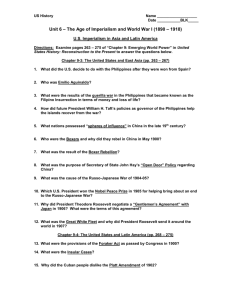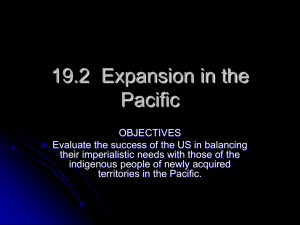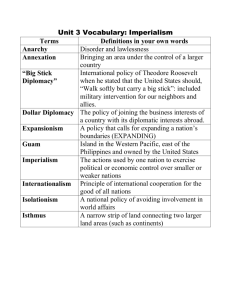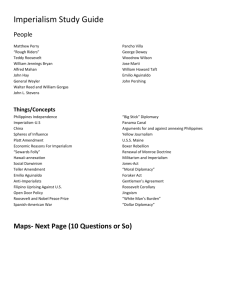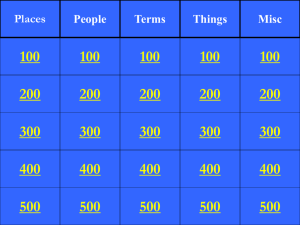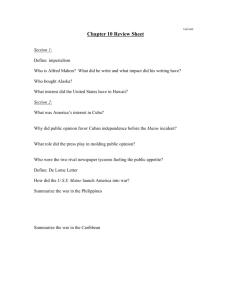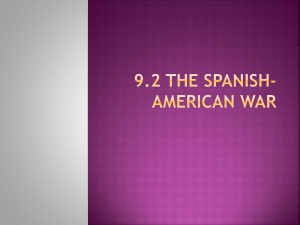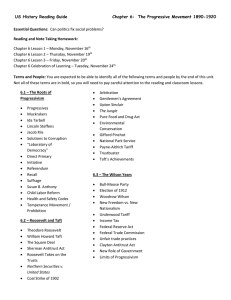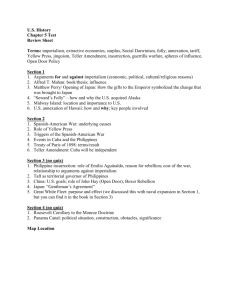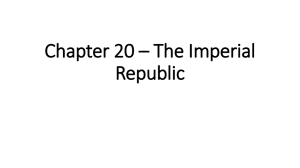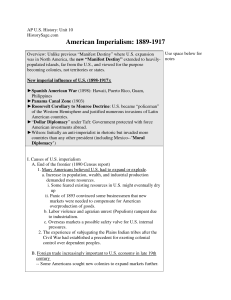The Imperial Republic Name ______________________________________ Per. ____ Date ______________________
advertisement
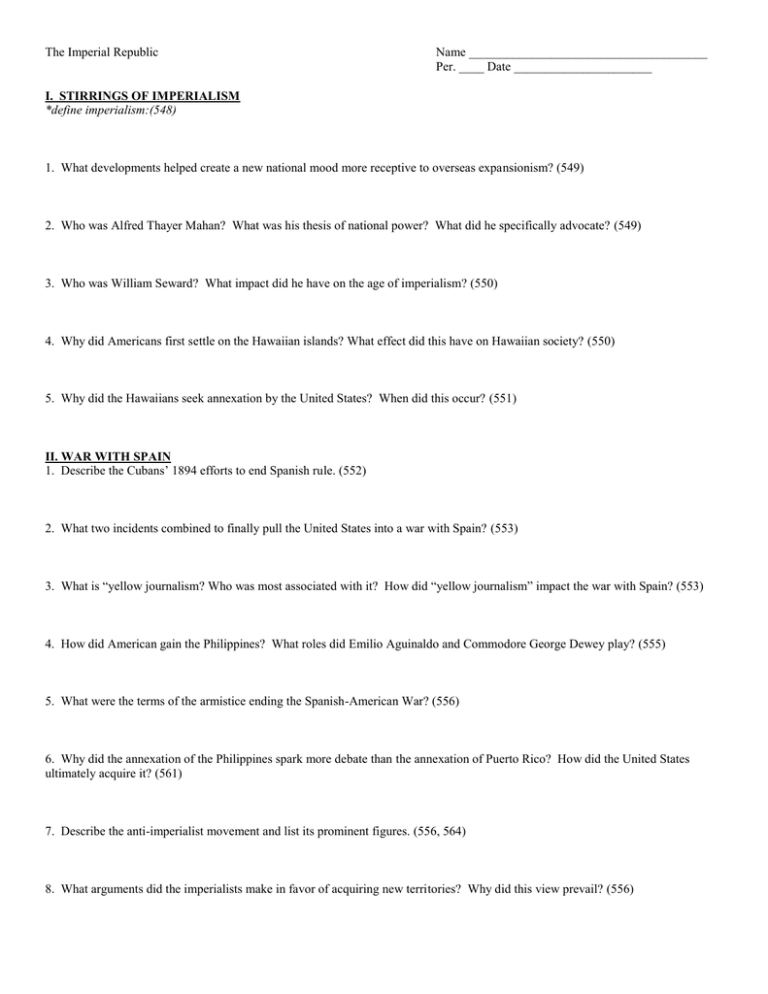
The Imperial Republic Name ______________________________________ Per. ____ Date ______________________ I. STIRRINGS OF IMPERIALISM *define imperialism:(548) 1. What developments helped create a new national mood more receptive to overseas expansionism? (549) 2. Who was Alfred Thayer Mahan? What was his thesis of national power? What did he specifically advocate? (549) 3. Who was William Seward? What impact did he have on the age of imperialism? (550) 4. Why did Americans first settle on the Hawaiian islands? What effect did this have on Hawaiian society? (550) 5. Why did the Hawaiians seek annexation by the United States? When did this occur? (551) II. WAR WITH SPAIN 1. Describe the Cubans’ 1894 efforts to end Spanish rule. (552) 2. What two incidents combined to finally pull the United States into a war with Spain? (553) 3. What is “yellow journalism? Who was most associated with it? How did “yellow journalism” impact the war with Spain? (553) 4. How did American gain the Philippines? What roles did Emilio Aguinaldo and Commodore George Dewey play? (555) 5. What were the terms of the armistice ending the Spanish-American War? (556) 6. Why did the annexation of the Philippines spark more debate than the annexation of Puerto Rico? How did the United States ultimately acquire it? (561) 7. Describe the anti-imperialist movement and list its prominent figures. (556, 564) 8. What arguments did the imperialists make in favor of acquiring new territories? Why did this view prevail? (556) III. THE REPUBLIC AS EMPIRE 1. How did the Foraker Act (1900) define the status of Puerto Rico? (559) 2. How did America exercise dominance over Cuba? (559) 3. Were early American actions in the Philippines aligned with the ideals that had led to the United States to help Cuba secure its independence? What ultimately became of the Philippines? (561) 4. For what reasons was the Open Door Policy established? What were its three main principles? How would this serve the United States? (562) 5. What was the Boxer Rebellion? (563) 6. What problems in the U.S. military were revealed during the war with Spain? What major military reforms were initiated in response to these problems? Were the reforms effective? (566) “THE BIG STICK”: AMERICA AND THE WORLD, 1901-1917 1. Why did Roosevelt get involved in the imperialistic ideal? (565) 2. What was the course of relations between the United States and Japan during Roosevelt’s presidency? How was this related to Roosevelt winning the Nobel Peace Prize in 1906? (566) 3. What was the “Roosevelt corollary”? What were immediate and general motivations behind it? What policy did it create? (568) 4. How did the United States acquire the rights to build the Panama Canal? Why have many observers questioned the propriety of U.S. methods? (566) 5. What central focus of William Howard Taft’s foreign policy? What nickname was it given? (568) 6. What actions did Taft and Wilson take toward Central American and Caribbean nations? List the nation and the action taken. (568) 7. What did Wilson taking sides in the Mexican governmental turmoil result in? Why did Wilson send Pershing into Mexico and what was the end result? (570)
